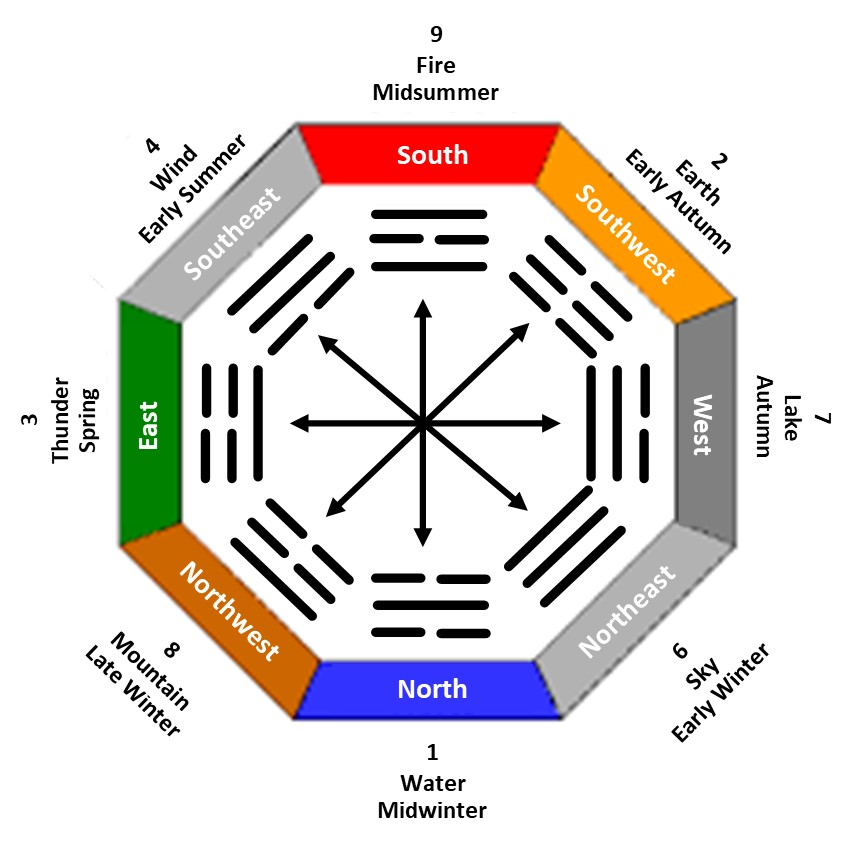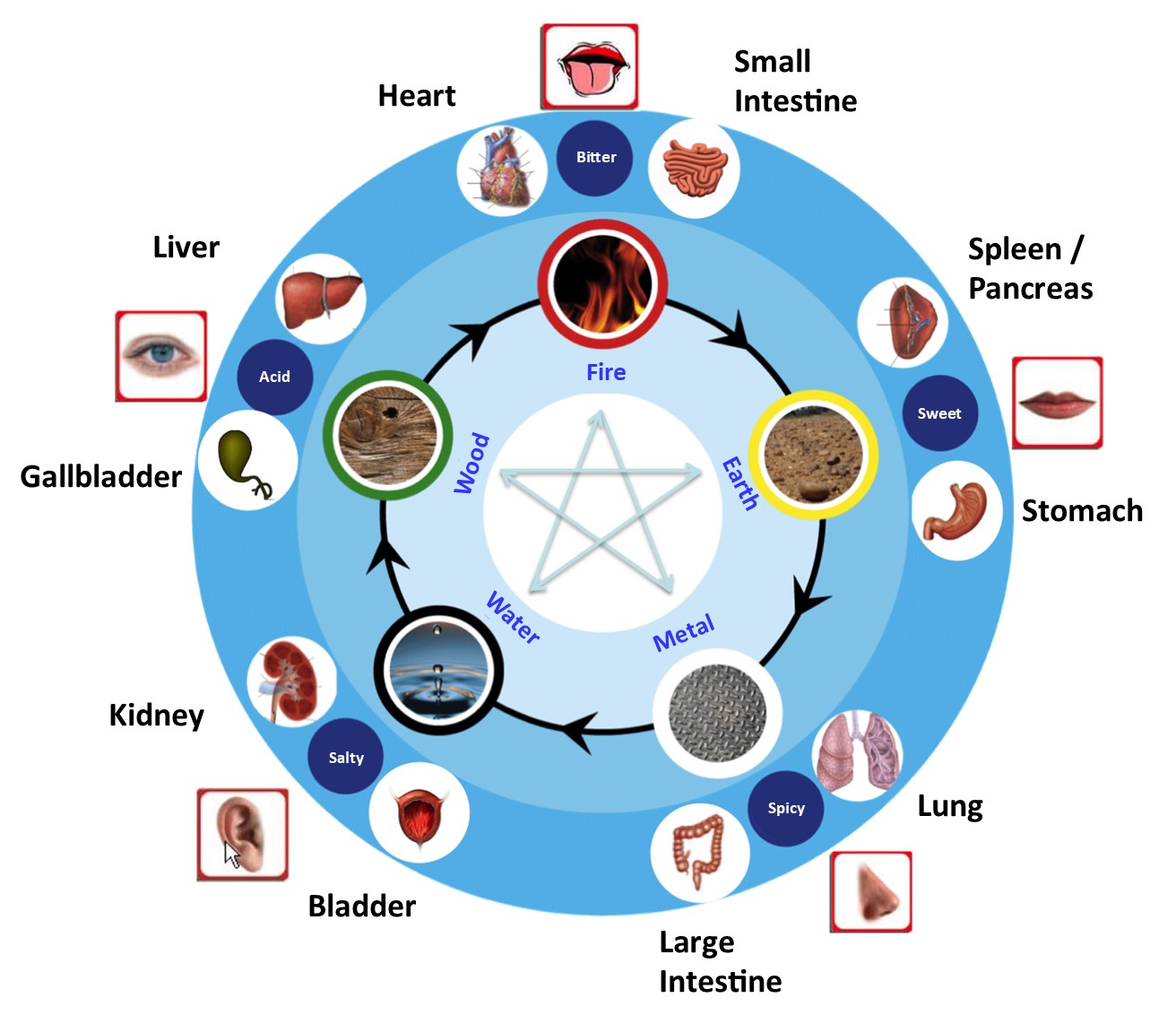
Unit V Lesson 2
Traditional Chinese Medicine is thousands of years old, as is the Chinese culture that prevailed thanks to the great dynasties that ruled for hundreds of years. The Chinese empire, for centuries remained isolated from the rest of the world. To the north, the construction of the Great Wall of China allowed the kingdom to defend itself against the barbarians of the northern regions, such as the Mongols. The result of this isolation was a very unique culture, developed throughout that long period. What was translated into a particular language, its religious beliefs and cosmogony, from which the arts and sciences developed.
Traditional Chinese Medicine is one of the great achievements of Eastern civilization, but to understand it we must at least know the foundations of Chinese philosophy and cosmogony, which differ greatly from Western scientific concepts.

Chinese Cosmogony
Chinese cosmogony is based on two polar principles called the yinn (feminine) and yang (masculine) represented in the yinn-yang mandala. The Tao, which is the origin or the absolute essence, is polarized in the yinn and yang aspects and from there, through multiple combinations, the 10 thousand things are created.

The first eight combinations of the positive (yang) and negative (yinn) aspects are the eight trigrams that form the Pa-kua and that can be understood as the main 8 forces of nature. From there we can continue to form combinations, now combining the 8 trigrams to achieve 64 hexagrams that are slightly more subtle aspects of nature. The Chinese believed that by using a divination system, preferably using 2 coins tossed at random, the dominant hexagram at any given time could be determined. Through this form of divination a person could make a decision regarding business, family, etc.
The principles of this cosmogony, or Chinese philosophy can be applied in all areas of life and nature, since the same aspects or forces are those that govern the health of the body, the condition of empires. There is even a whole science for the creation of living spaces known as the Feng-shi that pays great attention to the elements that must be placed in the different directions, which would be for us the cardinal points. To apply correctly, the properties of the 5 basic elements must be known, which, more than physical elements, are again aspects or energies of nature.
The 5 elements
The 5 elements are: wood, fire, earth, metal and water. According to the holistic thinking of Chinese philosophy, each of these elements also has a correspondence with many other aspects such as seasons of the year, organs of the body, colors, flavors, geographical directions, emotions...

One way to begin to understand the 5 elements is in their relationship to the seasons of the year.
For the Chinese, the year begins in the spring, whose element is wood and the organ the liver. Wood is the energy that allows us to wake up from winter and start a new cycle with a lot of energy. The liver, among many other functions, produces bile, but it also stores energy in the form of glycogen, which is made available to the body when necessary. Spring also corresponds to the time in the morning when we get up and our body secretes cortisol to have the energy needed to start daily activities. The emotion associated with the liver is courage, anger or rage. People who continually react with anger end up with gastrointestinal problems caused by excess bile. Keeping courage and not being able to express anger also has a harmful effect on the body, since in any case the liver produces bile, in extreme cases you can suffer a bile spill that, in addition to affecting the digestive system, can reach manifest as jaundice. By the way, the yellowish-greenish tone of the skin denotes a person dominated by feelings of anger.
Summer gives way to the next element which is Fire, related to the heart. Energy and heat are at their peak, equivalent to noon. The feeling is joy, as it is said that laughing is beneficial to the heart as it gives it energy. Fire people will have red skin, they will blush easily. They can have cardiovascular problems such as hypertension and are more prone to heart attacks. There is another very important aspect about the heart, but we will get to that later.
Next, we have a short period called late summer or dog days that is equivalent to the element Earth and its organ is the spleen-pancreas, since for the Chinese they form a single organ whose function is to regulate energy. The feeling associated with the spleen-pancreas is worry. They are apprehensive people who worry about something all the time. They become obsessed with ideas, which turn over and over in their heads. As we know, the problems associated with the spleen, and in particular with the pancreas, is diabetes, a disease associated with worries and anxieties.
Fall is the season where there are more respiratory disorders, it is associated with the lungs and with the element metal. In the daily schedule it corresponds to the afternoon and twilight. The hour of nostalgia, when the mind is ecstatic watching the leaves fall. Sadness is the feeling associated with the lungs, it is said that when we suffer from a cold or a respiratory problem, sadness or some associated emotion such as melancholy or nostalgia is behind it.
The last season of the year is winter, the coldest, least energetic associated with the element water. When the trees are devoid of foliage and the animals hibernate in their burrows, nature approaches the most inert state, it is the closest moment to death. His emotion is fear, associated with the kidneys, hence when a person has a panic attack they may lose control of his urine.
Traditional Chinese medicine, in addition to the organs, associates viscera to each of the elements, and in turn they are regulated energetically through a series of channels known as acupuncture meridians, but in this lesson we will not address these issues. Already with the theory of the 5 elements we can get an idea of the concept that the Chinese had about the main organs of the body and their relationship with emotions.
The relationship with the seasons of the year is also very important, because depending on the season in which we find ourselves, it will be the organ most likely to suffer an imbalance and therefore, the corresponding emotion may manifest itself with more intensity or generate disorders.

The function of the pericardium
The pericardium is also a very important organ for Traditional Chinese Medicine. Anatomically, it is a bag that covers the heart, protecting it and dampening its beats. For Chinese medicine, the organ is of great importance at an energetic level; but also the pericardium is the seat of the emotions. So in addition to being associated with the various organs already mentioned, emotions also pass through the pericardium. The interesting thing is that we also see this reflected in the pairs discovered by Dr. Isaac Goiz Durán as well as in the emotion code of Bradley Nelson, only that for Dr. Nelson the heart is the seat of emotions. In any case, the pericardium and the heart are anatomically practically in the same place since one surrounds the other.
We hope that this brief lesson will motivate students to go deeper into the study of Traditional Chinese Medicine, for which we recommend a series of books:
Questions or comments: info.gfu.lineasolar@gmail.com